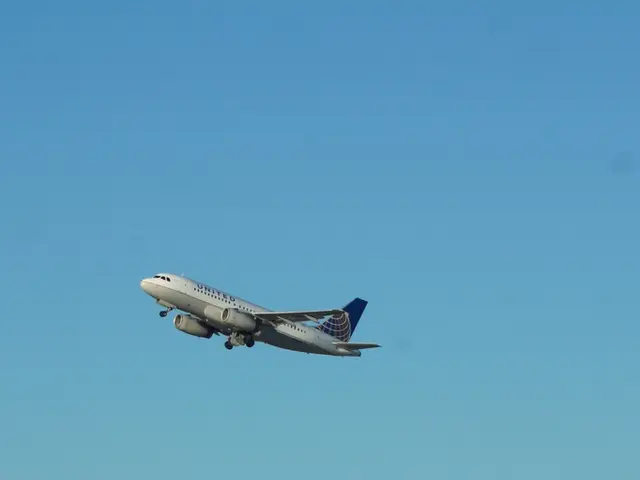Aircraft Orientation and Longitudinal Coordinate
Flying to Success: Mastering Angle of Attack and Chord Line
Ever wondered about the science behind an airplane soaring through the skies? Let's delve into the fascinating world of aerodynamics, focusing on the angle of attack (AOA) and chord line, your new best friends in flight! These essential concepts govern how aircraft generate lift, stay stable, and perform optimally under diverse flight conditions.
Whether you're a budding pilot, aircraft enthusiast, or just curious, getting a hang of these principles will significantly boost your aviation know-how. Buckle up, and let's explore the intriguing realm of angles and lines!
What in the world is AOA?
Angle of attack, or AOA for short, is the angle at which a plane's wing interfaces with the onrushing wind.
How AOA Impacts Flight
To lift off the ground, aircraft wings need to tilt relative to the airflow, rather than parallel to the ground. Essentially, the magic of flight comes down to managing the AOA. As the AOA increases, so does the lift. However, after a certain critical angle, a stall occurs (the wing loses lift, resulting in a fall). The speed at which a stall happens depends on several factors, such as the plane's weight, load factor, center of gravity, and more. Yet, the aircraft always stalls at the same critical angle of attack, typically around 15° - 20° for many airfoil types[1].
At low speeds, higher AOA is required to fly straight. During landings, for example, the plane's nose points upward (despite a massive AOA), yet the plane continues to descend because it moves at a slow speed. It's important to note that aircraft wings also have a structural AOA when the airplane is cruising with its fuselage appearing parallel[2].
Take a peek at the figure below for various airfoil types.
Wrapping Up: AOA & Chord Line Know-How
In the realm of aviation, understanding the chord line and AOA is vital for ensuring safe and efficient flights. The chord line serves as a crucial reference for evaluating airflow around the wing, while AOA determines how efficiently lift is generated[3]. Pilots need to be AOA-aware to maximize performance and steer clear of hazardous scenarios like stalls.
By understanding these principles, pilots and aircraft enthusiasts can deepen their grasp of flight dynamics and advance their overall aviation expertise. Whether you're prepping for your first solo flight or delving into advanced aerodynamics, maintaining a solid grasp of these concepts will amplify your flying skills and aviation smarts!
Explore our wealth of knowledge on aerodynamics and aviation principles at our website. Keep yourself informed, fly smarter, and prioritize safety above all else!
Sources:
- Boeing Commercial Airplanes, Basic Flight Maneuvers
- NASA, What is Angle of Attack?
- National Aeronautics Museum, Angle of Attack
- FlightAware, Angle of Attack Explained
- Aviation Pros, Airfoil Designs for High Angle of Attack Operation
- Aviation enthusiasts, intrigued by the science behind flight, will find the angle of attack (AOA) and chord line essential to understanding aerodynamics, especially for determining flight stability and efficiency within the aviation industry.
- By comprehending AOA, pilots can significantly enhance their flying skills and make informed decisions based on its impact on aircraft performance, avoiding stalling scenarios and ensuring safe flights.
- Mastering the intricacies of AOA and chord line is fundamental for professionals in the aerospace and transportation sectors, as deep knowledge of flight dynamics amplifies expertise and drives innovation within the aviation finance and design industries.








